I have decided to post a trip report from the Kenya birding safari Kay and I did from Nov. 8-23rd as our trip leader James Bradley is in the process of a quite detailed report on the birding aspects of the trip that will be far better than anything I could write. I’ll add a link once that post is online. That said the trip was a trip of a lifetime. Neither Kay nor I had ever been to Africa before this trip, and Kenya had a particular draw for Kay as her Dad had spent several years living and working in Kenya. In fact he returned from Kenya along with his new bride to New York and spent a few days with Kay and me at West Point early in our marriage. The trip group was only 7 members with just 5 paying participants, and two leaders. All of the clients were making their first Africa trip.
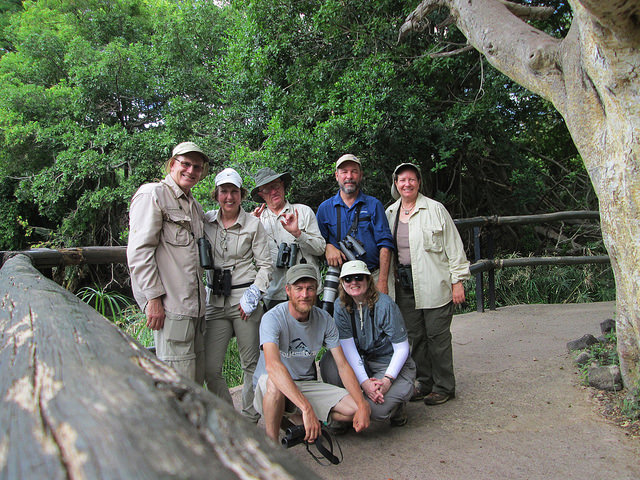
John Sterling, an experienced international birder, top notch ornithologist, expert photographer, and terrific story-teller was one leader of the group, and the is the person who helped put the group together. James Bradley was the primary tour leader, and organized the trip, the local guides, the accommodations, and IMHO is uniquely qualified to lead Kenyan birding trips.
James is the child of NGO workers and lived in Kenya from about age 5-15. Both of his parents were avid birders and so they took many family trips birding all over Kenya. He considers himself a Kenyan, though his citizenship is British and Canadian, and he lives in Victoria, BC now. After a couple of days on the trip Bruce Labar, a local friend who got Kay and me on the trip initially, whispered to me as James pointed out birds, plants, geology, cultural aspects of the tribes of each place we visited that, “He is a freeking encyclopedia of everything Kenyan.” He was not far off on that, as James was all over seemingly every bird we saw fly by, flited in the bushes, or otherwise showed itself in any fashion. In addition he seemed to know the common and Latin names of each bird, animal, and plant we saw as well as the geologic features we travelled through on the trip. Liz Johnson and Pat Trimble, the other two participants were long-time birding friends from central CA and had been on a trip to the American tropics with John previously, so the group was not just made up of avid birders, but easy people to be around.
One thing I learned first is that it is a really long ways from WA to Nairobi. We flew about 9 hours to Amsterdam on an overnight trip. We had a 12 hour layover in Amsterdam, and I seriously underestimated how cold it would be there. We went to town on the train, walked a few kilometers to the contemporary art museum, checked out the red-light district, inhaled a bit of secondhand cannabis, and shivered our way through a day where we were really tired already. I added one species to my European life list, Common Merganser!
From there we flew on a red-eye to Nairobi, arriving after an 8 hour flight at about 8 AM. Fortunately Kay and I managed to sleep much of this leg, so we could at least keep our eyes open on our first incredible day in Kenya. We were met at the airport by James and our driver Isaac with the Toyota 10 foot Safari vehicle that was home for long stretches of the daylight hours for the next 2 weeks. We went directly to Nairobi National Park where we saw Giraffes almost immediately as well as so many mammals it was hard to keep track of them all. All this with the Nairobi skyline often in the background was a bit surreal.
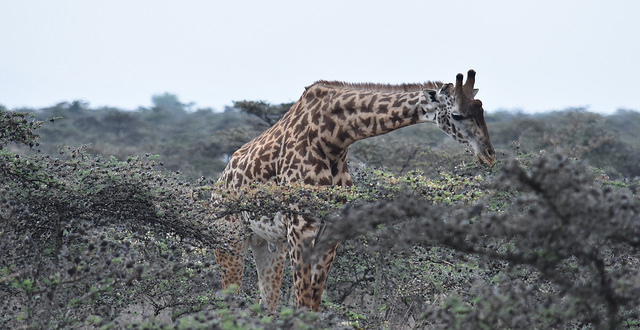
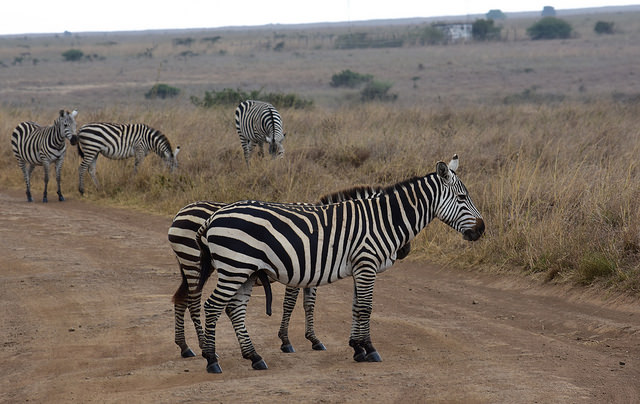
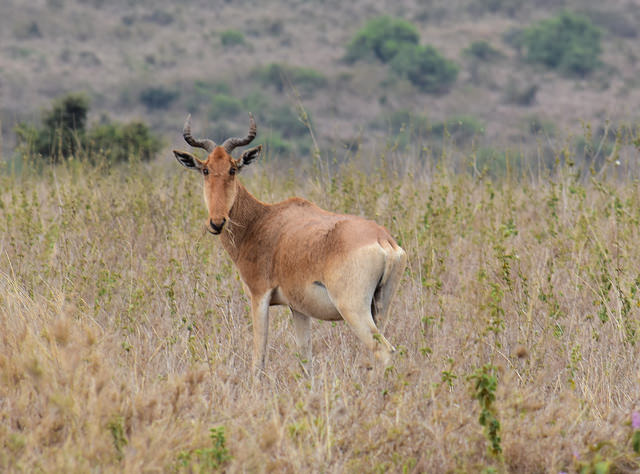
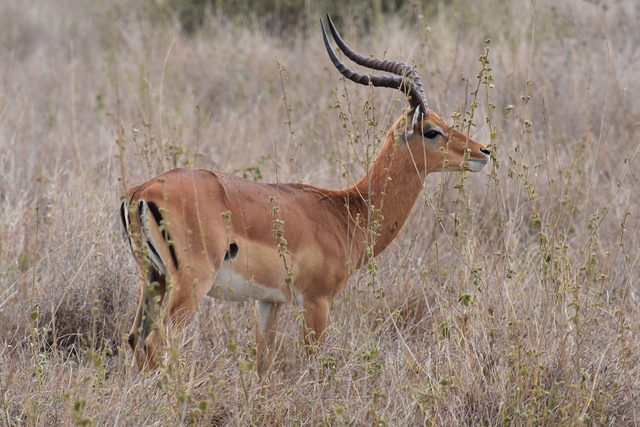
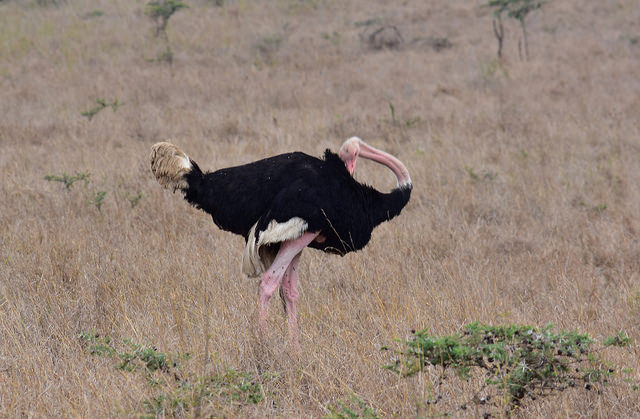
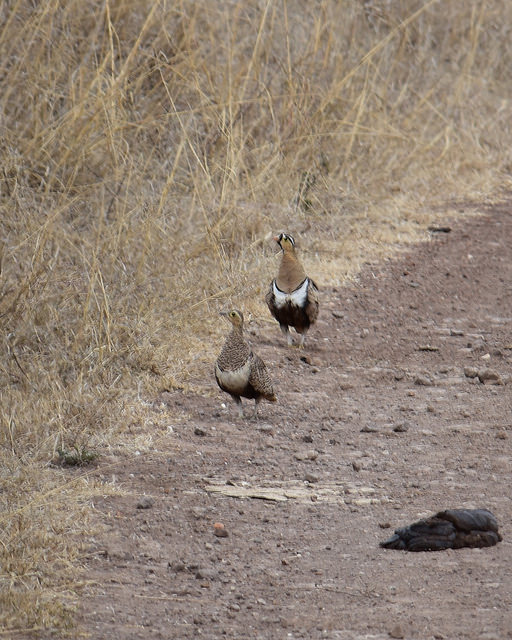
On the rest of our trip we travelled about 1150 miles in the vehicle, going first just a short drive beating the afternoon rush hour to the Nairobi Park Hotel, an oasis of green within Nairobi city limits that gave us a taste of the incredible birds we would see for the rest of the trip. Sunbirds are the African substitute for the new-world hummingbirds, but are generally a bit larger, and have medium to often very long decurved bills and can be spectacularly colorful (males) or confusingly drab (females) much like our hummingbirds in that regard. After birding the grounds for a couple of hours in the AM we headed west, with stops by at Old Kakuzi Rd, Del Monte Estate, Thika for lunch where the birds were so plentiful that if we had not been so jet-lag exhausted most of us might have not been able to sit down to eat. Despite our fatigue we enjoyed Giant, Gray-headed, Malachite and Pygmy Kingfishers, shorebirds, Sacred Ibis and lots more.
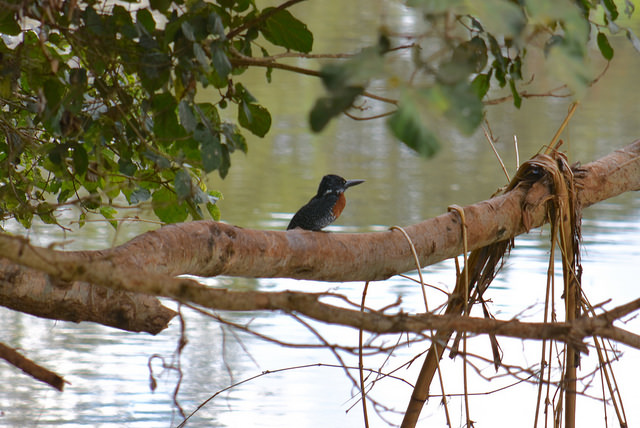
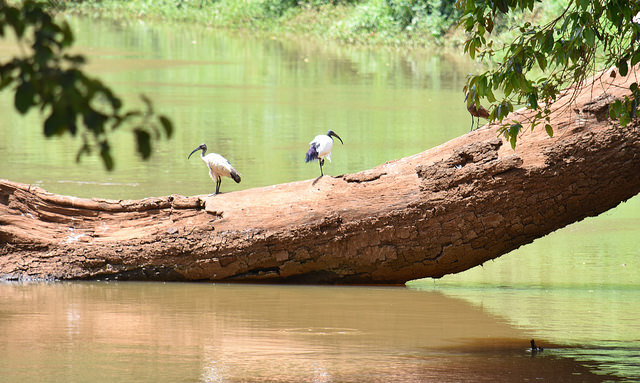
Next was a trip to an area called the Mwea Rice Fields in the afternoon. Here we got our first taste of the poverty of Kenya. We were not in a tourist area, and the among the workers (mostly women) were lots of men and children loitering, with some beggars including one with a colostomy draining into a shopping bag that he kept showing us as he asked for money. Still the birds here were easy to see, with spectacular looks at three species of lapwings/plovers
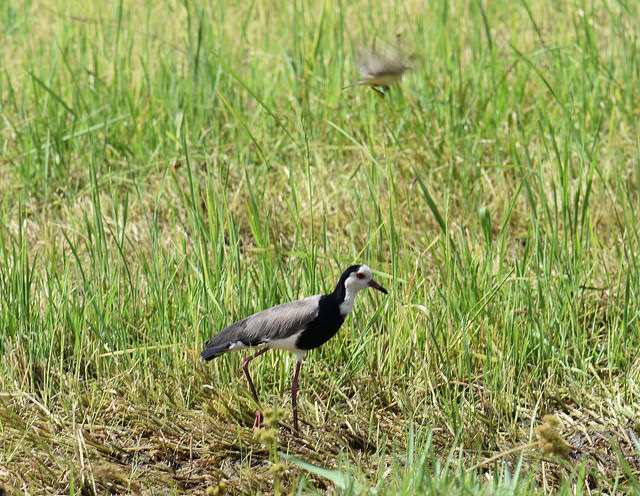
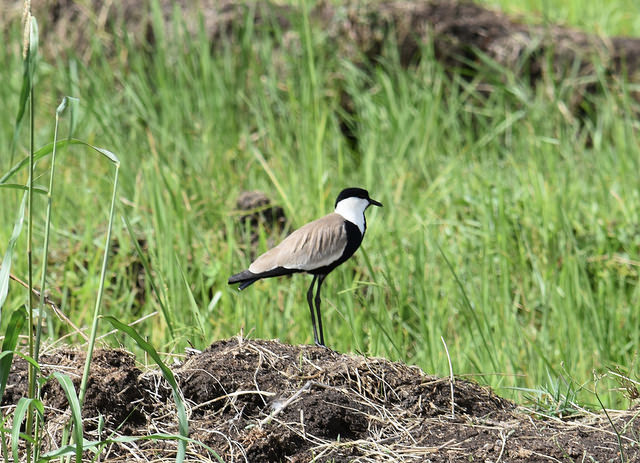
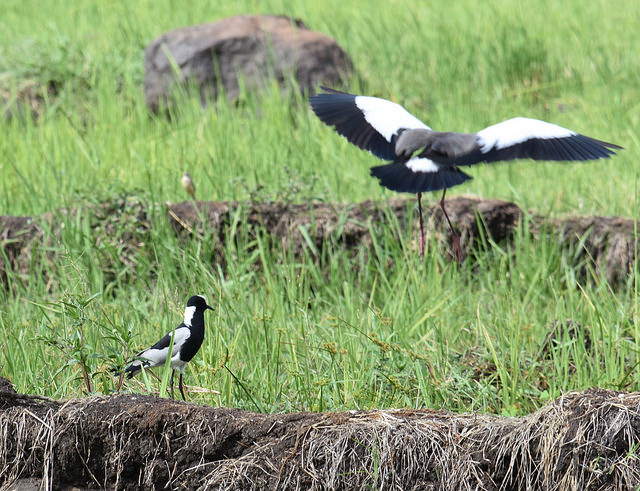
along with various races of Yellow wagtail as highlights.
From there we went to my favorite lodging of the trip, the Castle Mountain Lodge. It is at about 8000 feet elevation on the north slopes of Mt. Kenya. Here we each had a cabin for 2 (Bruce roomed alone) with a fireplace the staff started each evening after supper, great birding in a remnant high elevation forest, and recovered from our long flight. We also saw lots of local Kenyans living a subsistence live, gathering wood for their cooking each morning, and walking long distances with firewood or water on their heads (women and children only of course).
After two nights here, where highlights were seeing Olive Ibis (lifer for James), the great food at the kitchen, a termite hatch with lots of birds congregating for the feast, and the spectacular scenery.
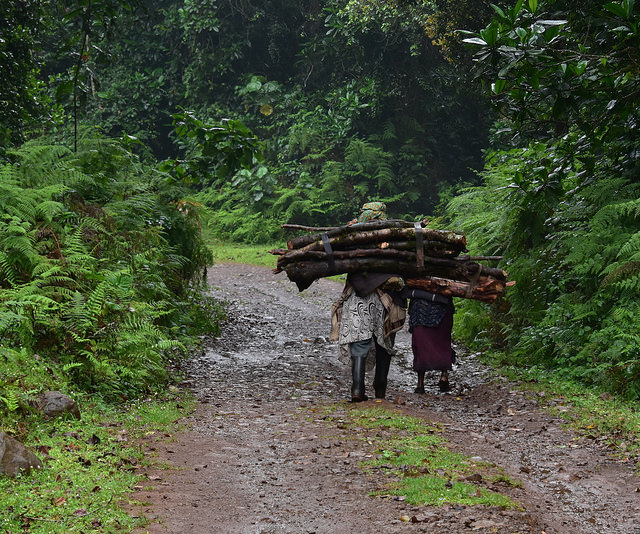
As we drove out of the property we came upon a small group of Crested Guineafowl, a rarity of the highlands, and I managed to get the only photos through the windshield from the back seat of the vehicle.
We made a few stops on the way to Lake Bagoria, one of the wintering areas for Lesser Flamingos, along with Greater Flamingos, Great White Pelicans, lots of shorebirds, and birds of the brush country.
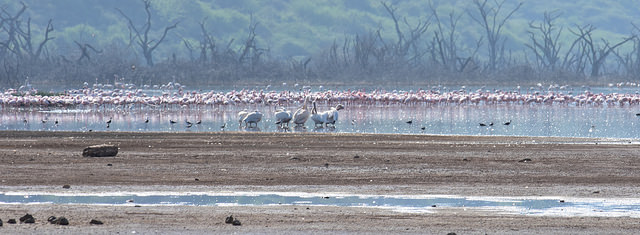
The worlds entire population of Lesser Flamingos breed on two lakes on the southern Kenya-Northern Tanzania border, and winter on alkaline lakes nearby. This was a real treat to see in massive flocks. The next morning we headed to Kisumu on the shore of Lake Victoria where we took a boat into the papyrus swamps, enjoyed the time on the water, and saw lots of new birds including an African Openbill, our first Purple Heron, lots of Squacco Herons, and several elusive papyrus swamp passerines.
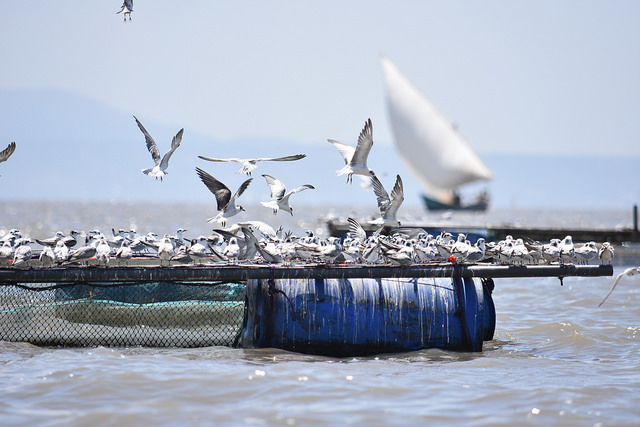
We continued the next morning with a local guide to see some stakeout specialties including Three-banded Courser and Slender-tailed nightjars on their daytime roosts. We stayed the next 3 nights at my second-favorite stop, the Rondo Retreat Center in the Kakamega Forest. This is the last remaining high-elevation rain forest in Kenya, and was a magical place. Our group stayed together in a house with separate bedrooms with their own separate baths, and we had quite formal dinners (had to wear long pants 😉 after seeing crazy numbers of new birds each day. We learned how difficult it is to distinguish greenbuls (all yellowish-green and stealthy) by sight, but much easier by song, and were enchanted to watch a juvenile Created Eagle the first day on a perch, and the second day devouring the only Red-tailed monkey we saw on the trip. It methodically ate every part of the primate, including the hands, bones and tail, and was still able to fly away! Great-blue and Ross’s Turacos were seen by all too.
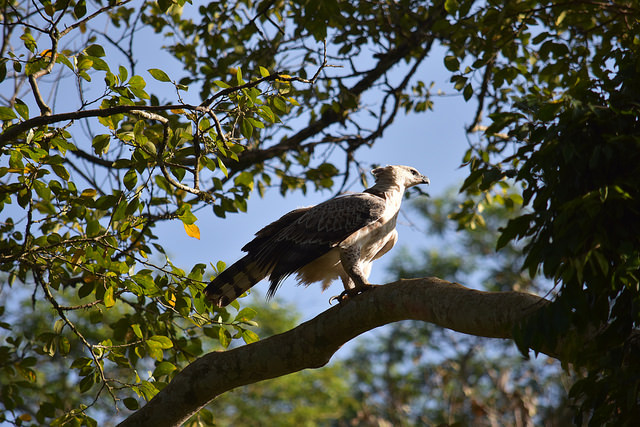
From here we went to see our first Hippopotami at Lake Naivasha. We saw some wallowing in the water, yawning and eating in the shallow water at pretty close range in the late afternoon.
At night we were warned to not venture out of our room without an escort, as the hippos feed on the lawn (they grasp the short grass with their strong and tactile lips and avoid the sunburn they would get if they ventured out of the water into the equatorial daytime sun) and can be very dangerous. Kay, Bruce and I had a guide take us out at about 9:30 PM to see a young male orphan rhino (It’s mom killed by an old male rhino apparently) who came to feed early. In the middle of the night Kay looked out the window to see several just feet from our room. We saw new birds here too, and the next day headed for Tsavo West National Park.
At Tsavo West highlights were again the mammals, with lots of elephants including a large male charging the vehicle. This was one of the first groups of elephants we saw and were all excited that one of them seemed to be coming close enough for great views and photos. Our more experienced guide James with his typical British reserve first suggested quietly to Isaac that “we can move along now.” As the elephant started to trot towards us with his ears picking up he repeated more loudly to move a little faster. Then as the beast got a lot closer, and it became a real charge, screamed to Isaac to “get going, Faster! Faster!!! It was fun to listen to this interchange as we all marveled at the elephant. The other crazy thing we experienced on the trip was late in the afternoon as we neared our lodge. Right by the side of the road was a Brown Snake-eagle in a death struggle with a Red Spitting-cobra. We watched for several minutes, debating who had the upper hand. James and John, voices of more experience, thought the eagle would win as the temperature dropped, the snake became less energetic, and that the eagle would eventually devour the snake and be fine. What do you think?

The Tsavo West lodge was just on the edge of the park. We ate outside on the deck, near an area where they hung a goat esophagus to “bait’ leopards to come at night so guests could see them. No success on the night we stayed, and so the biggest “miss” of the trip was no large cats. We hoped for lion, leopard, possibly cheetah but no success. This gives Kay and me a great reason to visit South Africa on another trip someday.
We spent the next morning traveling to our next lodge, again birding Tsavo West on the way, and got there mid-afternoon. Kay took a break that afternoon, but some of us birded the brush just outside the resort and added a few bush species. There were again lots of elephants at the lodge pond in the evening, and some came very close to the dining area at dinnertime.
From here we spent the next day driving through Tsavo East and birding there. It is a much drier, grassland area vs. the more bush-scrub like Tsavo West. Birds here were different and in the afternoon we drove to the coast.
We spent the last three nights at the Turtle Bay Beach Club on the Indian Ocean. As with most of our stays, it was comfortable, meals were buffet style with plenty of vegan options for Kay and me, and we birded both the Arabuko-Sokoke Forest with a local guide and had the last full day on the coast at Mida Creek, a tidal estuary, and the mouth of the Sabaki River. Treats for me here were seeing lots of Eurasian shorebirds and especially Crab Plovers which were abundant. Meeting this honeymooning bride was fun too.
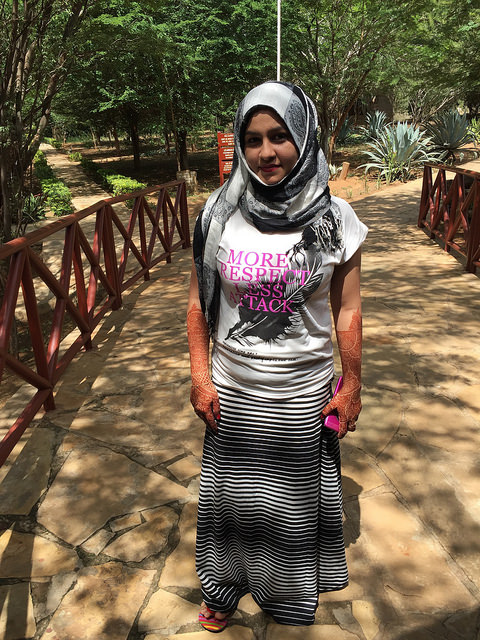

The trip home was an endurance effort, especially a 12 hour layover at the Nairobi Airport (not a plush place, but we did find an outdoor cafe with a breeze) and the two flights each an hour longer than coming due to headwinds.


Diane: We do not know the outcome of the Brown Snake-eagle and the Red Spitting Cobra. We had to move on and did not return that direction. The more experienced among us think this may be a relatively common experience for the eagle, and with patience the bird will win. I hope so. I have much less sympathy for spitting cobras 🙂 I had 548 total species on the trip, and the vast majority were lifers (515 I think).
Wow, what an adventure. QUESTION: Did the Brown Snake-eagle live through the Spitting Cobra episode? You had me on the edge of my seat! Also when the elephant was charging the vehicle!!
How many life birds for each of you?